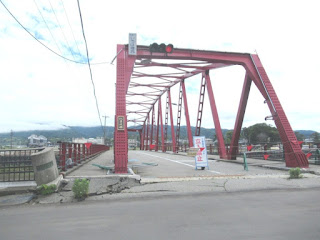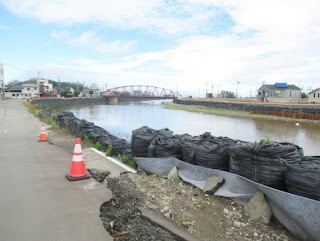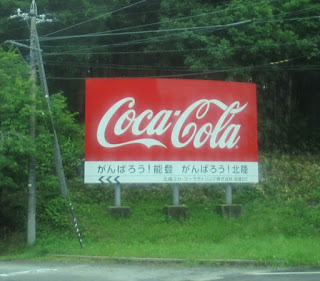The Noto Peninsula region was severely hit by a large-scale earthquake in January 2024. A seismic intensity of 7 was recorded in Wajima City and other areas. More than 100,000 houses were damaged throughout Ishikawa Prefecture, of which 25,000 were completely or half destroyed. The death toll was more than 500 people throughout the Prefecture.
In addition, a typhoon caused heavy rain damage in the region in September 2024.
A year and a half have passed since the earthquake, and each area of Noto is making efforts for the recovery. However, the damages of the disaster still remain.
I today visited Wajima City, one of the disaster-hit areas. I had originally planned to do some volunteer works, but I only visited there this time as the arrangement was cancelled.
Wajima City is located in the northwest of the Noto Peninsula. It has a population of about 20,000. It took about three hours by express bus from Kanazawa to Wajima.
Wajima was famous for its morning market in the city center. More than 200 stores were lined up along the 360-meter-long Asaichi Street. They sold seafood, vegetables, souvenirs, and other items. It was crowded with tourists.
However, a fire broke out during the earthquake, and all the stores in the area were burned down.
The site is now a vacant land. Some of the stores have started operation in other places, and the morning market association is aiming to reopen the market in its original place. However, no specific plans have been decided yet. (See also the 5th photo from the top)
The earthquake caused the land in the Wajima area to rise, by several meters in some places. The foundation of the Iroha Bridge, close to Asaichi Street, has become uneven, making it impassable. (See the top photo)
The
banks of the Kawarada River, which runs through the city center, were also
damaged in various places and are still not repaired.
Wajima Port was temporarily unable to be used after the earthquake due to the rise of the ground. Cranes for dredging and other works are still standing there. (See also the 4th photo)
There are still many houses in the city that have tilted and are no longer habitable. (See also the 3rd photo)
I also saw demolition works of houses in various places.
Daily life seems to be gradually returning to normal. There were not many people in the town, but shops and restaurants were open, and I saw people doing yard work.
Cram schools have reopened. I found entrance exam information attached to the windows of a school.
I saw a church that had reopened using a container.
Temporary houses were still used in various places in the city. The houses were used not only by local people who had lost their homes, but also by those who were visiting Wajima for construction works. (See also the 7th photo)
Wajima is famous for its lacquerware, Wajima-nuri. Many Wajima-nuri workshops were lost in the earthquake. Temporary workshops have been set up in various places in the city.
Volunteers are essential for recovery. According to Ishikawa Prefecture, the number of volunteers who gathered in the disaster area has already reached 140,000. The support they provide is varied, including disposing earthquake waste, helping with farmland recovery, farm works, and providing soup kitchens.
I met many volunteers in the city. Temporary housing for volunteers and tents for storing materials were set up in the grounds and parking lot of Juzo Shrine, close to Asaichi Street. On the day, volunteers came from Hiroshima Prefecture and elsewhere. (See also the 2nd photo)
A little further away, I met volunteers from Shizuoka Prefecture. They said they had planned an event that the local people could enjoy.
Wajima once had a railway line, but it was abolished in 2001. The railway station has now become a roadside station or Michi-no-eki, and serves as a departure and arrival point for long-distance buses.
The former platform remains as it was.
The roadside station sells Wajima's specialties and souvenirs. I bought some Wajima wakame seaweed.
On the way from Kanazawa to Wajima, I saw vestiges of the damage in various places. Near Noto Satoyama Airport, I saw traces of a landslide in the mountain along the road. (See the 5th photo)
Driftwood that had been washed down from the mountains still remained in the Kawarada River that flows into Wajima.
Along the road, I found many boards with slogans wishing for the reconstruction of Noto.





.JPG)





















No comments:
Post a Comment